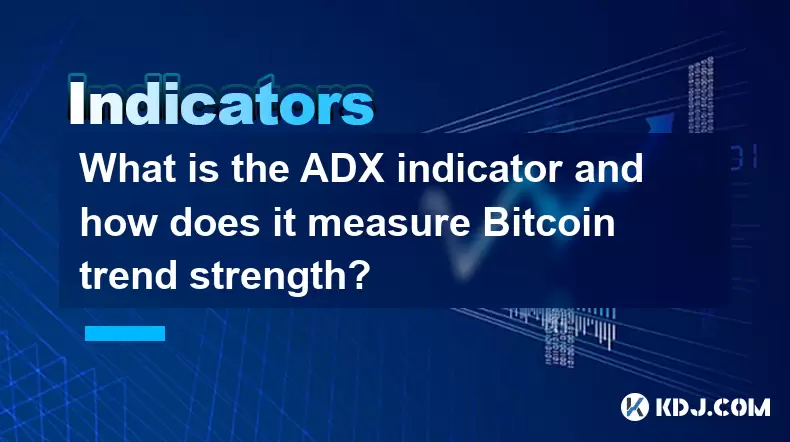-
 Bitcoin
Bitcoin $111,259.5910
2.32% -
 Ethereum
Ethereum $2,789.1977
6.17% -
 Tether USDt
Tether USDt $1.0006
0.06% -
 XRP
XRP $2.4172
3.88% -
 BNB
BNB $671.6585
1.21% -
 Solana
Solana $157.1336
2.90% -
 USDC
USDC $1.0001
0.02% -
 TRON
TRON $0.2913
1.52% -
 Dogecoin
Dogecoin $0.1809
5.04% -
 Cardano
Cardano $0.6213
4.40% -
 Hyperliquid
Hyperliquid $41.7572
6.29% -
 Sui
Sui $3.1623
8.35% -
 Bitcoin Cash
Bitcoin Cash $513.7819
1.17% -
 Chainlink
Chainlink $14.2966
1.64% -
 Stellar
Stellar $0.2904
9.82% -
 UNUS SED LEO
UNUS SED LEO $8.9624
-0.86% -
 Avalanche
Avalanche $19.4161
5.41% -
 Hedera
Hedera $0.1754
8.17% -
 Shiba Inu
Shiba Inu $0.0...01243
4.58% -
 Toncoin
Toncoin $2.8743
2.25% -
 Litecoin
Litecoin $90.6242
3.12% -
 Monero
Monero $328.7483
3.34% -
 Polkadot
Polkadot $3.6433
5.06% -
 Dai
Dai $1.0002
0.02% -
 Ethena USDe
Ethena USDe $1.0011
0.06% -
 Uniswap
Uniswap $8.3418
8.66% -
 Bitget Token
Bitget Token $4.4331
2.68% -
 Pepe
Pepe $0.0...01102
8.17% -
 Aave
Aave $297.1705
-0.69% -
 Pi
Pi $0.4712
1.31%
What is the ADX indicator and how does it measure Bitcoin trend strength?
The ADX indicator helps Bitcoin traders assess trend strength, with values above 25 signaling a strong trend, while below 25 suggest consolidation or weak movement.
Jul 09, 2025 at 11:28 pm

Understanding the ADX Indicator
The ADX (Average Directional Index) is a technical analysis tool used to measure the strength of a trend in financial markets, including cryptocurrency. Developed by Welles Wilder, the ADX does not indicate whether the trend is bullish or bearish but rather how strong the current trend is. In the context of Bitcoin, this indicator becomes particularly useful during volatile market conditions.
ADX values range from 0 to 100, with higher values indicating stronger trends. Typically:
- ADX below 25: Suggests a weak or non-trending market.
- ADX above 25: Indicates a trending market.
- ADX above 50: Suggests a very strong trend.
Traders often use this metric alongside other indicators like the +DI (Positive Directional Indicator) and -DI (Negative Directional Indicator) to determine both the direction and strength of a trend.
How ADX Works Mathematically
To understand how ADX measures Bitcoin’s trend strength, it's essential to grasp its calculation methodology. The formula involves several steps:
- Calculate directional movement (+DM and -DM) based on price highs and lows.
- Compute true range (TR), which accounts for gaps between previous closing prices and current highs/lows.
- Determine smoothed averages of +DM, -DM, and TR over a specified period (usually 14).
- Derive +DI and -DI by dividing smoothed DM values by the smoothed TR and multiplying by 100.
- Calculate the directional movement index (DX) using +DI and -DI:
$$ DX = \left( \frac{|\text{+DI} - \text{-DI}|}{\text{+DI} + \text{-DI}} \right) \times 100 $$ - Finally, compute ADX as a smoothed moving average of DX values over the same period.
This mathematical foundation ensures that ADX reflects the persistence of a trend, especially important when analyzing assets like Bitcoin, which can experience rapid shifts in momentum.
Using ADX for Bitcoin Trend Analysis
In the world of Bitcoin trading, identifying strong trends early can significantly improve trade outcomes. When the ADX rises above 25, it signals that a trend has developed, whether upward or downward. Traders then look at the relationship between +DI and -DI to determine the direction of the trend.
- If **+DI crosses above -DI**, it may signal a potential uptrend.
- If **-DI crosses above +DI**, it could indicate a downtrend.
For example, during a strong bull run in Bitcoin, you might observe the ADX line climbing steadily, accompanied by +DI remaining above -DI. Conversely, during a bearish phase, -DI dominates, and ADX remains elevated, suggesting a powerful downtrend.
Interpreting ADX Signals in Volatile Markets
Cryptocurrency markets are inherently volatile, and Bitcoin is no exception. This volatility can sometimes cause false signals or whipsaws when relying solely on ADX. Therefore, traders should not rely exclusively on this indicator but instead combine it with others such as moving averages, RSI, or volume analysis.
- During consolidation phases, **ADX stays below 25**, signaling a lack of clear trend.
- Sudden spikes in **Bitcoin price** may push **ADX above 25 temporarily**, but if it quickly retreats, the trend may not be sustainable.
- When **ADX peaks and starts to decline**, it can suggest that the current trend is losing momentum, even if prices continue to move in one direction.
These nuances help traders avoid premature entries or exits, especially in fast-moving environments where Bitcoin can swing dramatically within short timeframes.
Practical Steps to Apply ADX in Bitcoin Trading
Integrating the ADX indicator into your Bitcoin trading strategy involves several practical steps:
- Select a reliable trading platform or charting tool that supports **ADX visualization**, such as TradingView or Binance’s native tools.
- Set the default period to 14 unless you have a specific reason to adjust it.
- Enable both **+DI and -DI lines** along with ADX for complete insight.
- Observe how ADX behaves during different market conditions—look for patterns where **trends coincide with ADX rising above 25**.
- Use **crossover signals between +DI and -DI** to confirm trend direction before making trades.
- Combine ADX readings with candlestick patterns or support/resistance levels for better confirmation.
By following these steps, traders can more accurately assess the strength and sustainability of Bitcoin’s current trend, helping them make informed decisions.
Frequently Asked Questions
Q: Can ADX predict future price movements of Bitcoin?
A: No, ADX does not predict price direction; it only measures the strength of an existing trend. Price prediction requires additional tools and analysis methods.
Q: Is ADX effective on shorter timeframes for Bitcoin trading?
A: While ADX can be applied to any timeframe, it tends to be more reliable on longer intervals like 1-hour or daily charts due to reduced noise and fewer false signals.
Q: What happens when ADX fluctuates around 25 frequently?
A: This typically indicates a sideways or consolidating market where no strong trend is present. Traders may choose to avoid trend-following strategies during these periods.
Q: How does ADX compare to other trend indicators like MACD or RSI?
A: Unlike MACD or RSI, which provide directional or overbought/oversold signals, ADX focuses purely on trend strength, making it complementary rather than competitive with those tools.
Disclaimer:info@kdj.com
The information provided is not trading advice. kdj.com does not assume any responsibility for any investments made based on the information provided in this article. Cryptocurrencies are highly volatile and it is highly recommended that you invest with caution after thorough research!
If you believe that the content used on this website infringes your copyright, please contact us immediately (info@kdj.com) and we will delete it promptly.
- GMX Exploit: $42M Liquidity Pool Hack Exposes DeFi Security Flaws
- 2025-07-10 16:50:14
- FTX Bankruptcy Fallout: Tokens and Market Cap Under Scrutiny
- 2025-07-10 16:30:12
- ChatGPT, X, and Crypto Trends: Navigating the Hype in 2025
- 2025-07-10 16:50:14
- DXY Weakness: Is This the Bitcoin Breakout We've Been Waiting For?
- 2025-07-10 16:30:12
- LetsBonkFun Takes the Throne: A New Era for Solana Memecoins
- 2025-07-10 17:10:12
- Binance, Altcoins, and Futures: Navigating the Crypto Landscape Like a New Yorker
- 2025-07-10 16:55:12
Related knowledge

How to trade Dogecoin based on funding rates and open interest
Jul 07,2025 at 02:49am
Understanding Funding Rates in Dogecoin TradingFunding rates are periodic payments made to either long or short traders depending on the prevailing ma...

What is the 'God Mode' indicator for Bitcoincoin
Jul 07,2025 at 04:42pm
Understanding the 'God Mode' IndicatorThe 'God Mode' indicator is a term that has emerged within cryptocurrency trading communities, particularly thos...

Using Gann Fans on the Dogecoin price chart
Jul 07,2025 at 09:43pm
Understanding Gann Fans and Their Relevance in Cryptocurrency TradingGann Fans are a technical analysis tool developed by W.D. Gann, a renowned trader...

How to spot manipulation on the Dogecoin chart
Jul 06,2025 at 12:35pm
Understanding the Basics of Chart ManipulationChart manipulation in the cryptocurrency space, particularly with Dogecoin, refers to artificial price m...

Bitcoincoin market structure break explained
Jul 07,2025 at 02:51am
Understanding the Dogecoin Market StructureDogecoin, initially created as a meme-based cryptocurrency, has evolved into a significant player in the cr...

How to backtest a Dogecoin moving average strategy
Jul 08,2025 at 04:50am
What is a Moving Average Strategy in Cryptocurrency Trading?A moving average strategy is one of the most commonly used technical analysis tools in cry...

How to trade Dogecoin based on funding rates and open interest
Jul 07,2025 at 02:49am
Understanding Funding Rates in Dogecoin TradingFunding rates are periodic payments made to either long or short traders depending on the prevailing ma...

What is the 'God Mode' indicator for Bitcoincoin
Jul 07,2025 at 04:42pm
Understanding the 'God Mode' IndicatorThe 'God Mode' indicator is a term that has emerged within cryptocurrency trading communities, particularly thos...

Using Gann Fans on the Dogecoin price chart
Jul 07,2025 at 09:43pm
Understanding Gann Fans and Their Relevance in Cryptocurrency TradingGann Fans are a technical analysis tool developed by W.D. Gann, a renowned trader...

How to spot manipulation on the Dogecoin chart
Jul 06,2025 at 12:35pm
Understanding the Basics of Chart ManipulationChart manipulation in the cryptocurrency space, particularly with Dogecoin, refers to artificial price m...

Bitcoincoin market structure break explained
Jul 07,2025 at 02:51am
Understanding the Dogecoin Market StructureDogecoin, initially created as a meme-based cryptocurrency, has evolved into a significant player in the cr...

How to backtest a Dogecoin moving average strategy
Jul 08,2025 at 04:50am
What is a Moving Average Strategy in Cryptocurrency Trading?A moving average strategy is one of the most commonly used technical analysis tools in cry...
See all articles

























































































